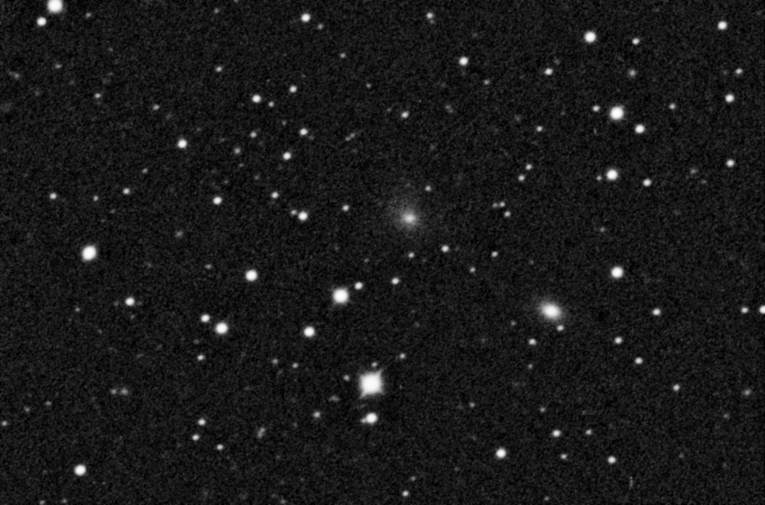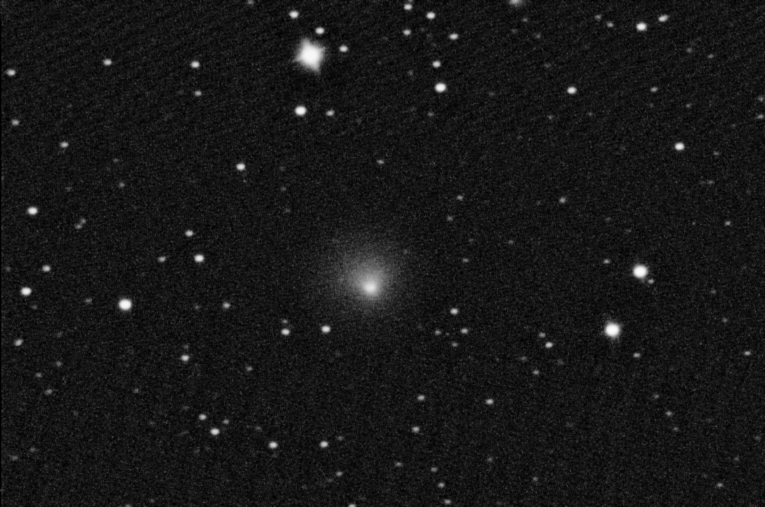
Comet 1997 BA6 Spacewatch. August 27, 2000.
3 minutes exposure, Meade 416xt CCD. 300mm f/6 newtonian telescope at prime focus.
One of the more interesting faint comets of 2000 was 1997 BA6 Spacewatch. This longlasting comet was originally thought to be an asteroid when discovered, hence the designation. It was only sometime later that cometary activity was noted. Although perihelion was at around 3.5AU, the comet displayed a sizeable coma and short tail. It reached a peak brightness of around 13.5, however I know of no visual observations. One probable reason for this is that the comet was visible only from the southern hemisphere where at the time, few observers had access to large scopes.

The comet shows a 'bright' central condensation with a faint outer coma and a short, faint, fan-shaped tail pointing towards the north-north-east. North is towards the top of the image. At this stage the comet was around 13.6 magnitude but was not visible visually in a 12" telescope.
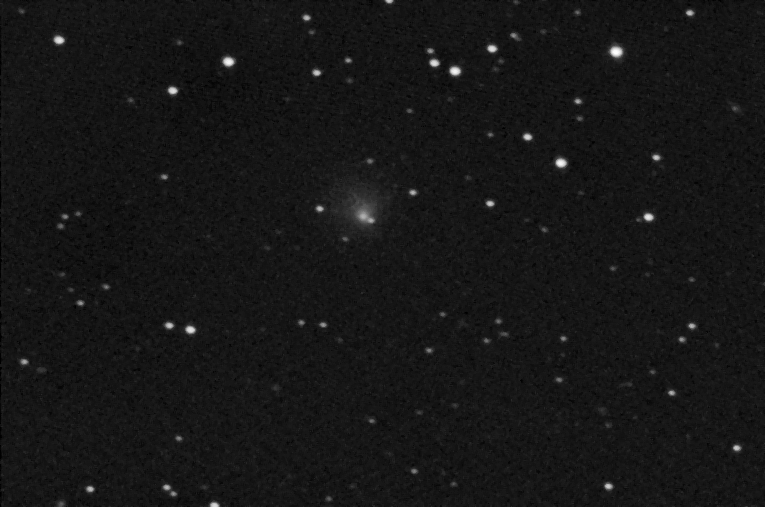
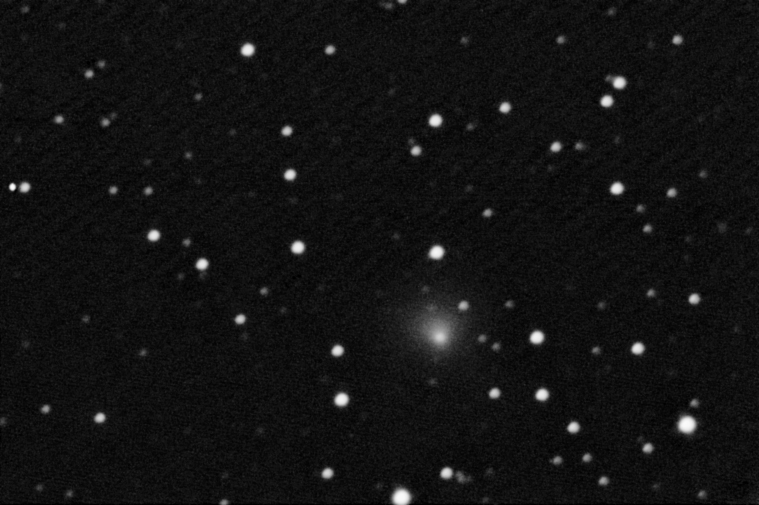
Comet 1997 BA6 Spacewatch. August 30, 2000.
Combination of 2, 3 minute exposures, Meade 416xt CCD. 300mm f/6 newtonian telescope at prime focus.
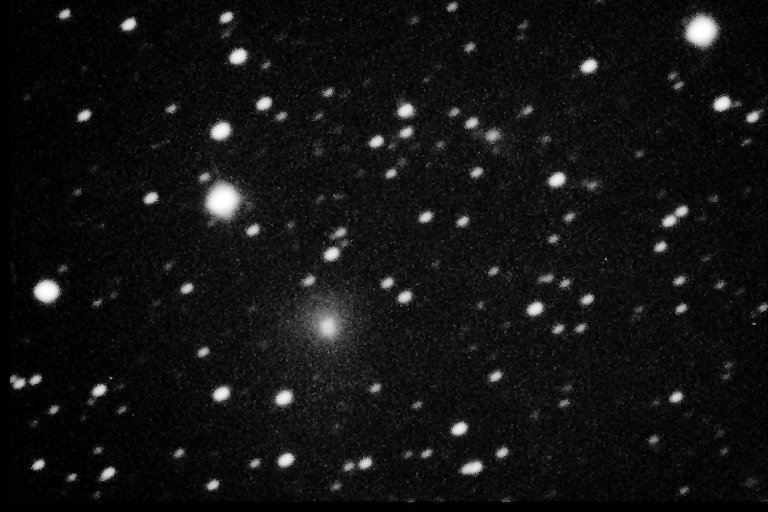
Comet 1997 BA6 Spacewatch. October 28, 2000.
Combination of 2, 5 minute exposures, Meade 416xt CCD. 300mm f/6 newtonian telescope at prime focus.
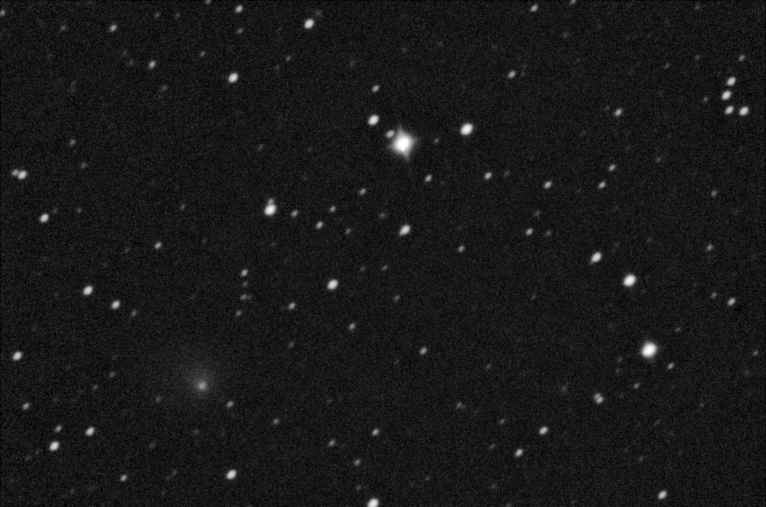
Comet 1997 BA6 Spacewatch. October 29, 2000.
3 minutes exposure, Meade 416xt CCD. 300mm f/6 newtonian telescope at prime focus.
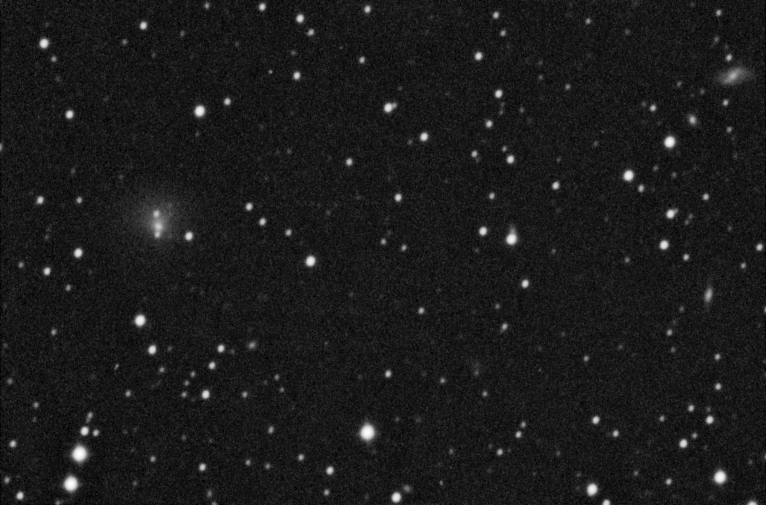
Comet 1997 BA6 Spacewatch. October 30, 2000.
Combination of 2, 3 minute exposures, Meade 416xt CCD. 300mm f/6 newtonian telescope at prime focus.
The galaxy at the upper right of the image is ESO 400-14, also listed as PGC 64634. The listed magnitude is 16.0. The smaller galaxy below it is not listed in either MegaStar or The Sky.
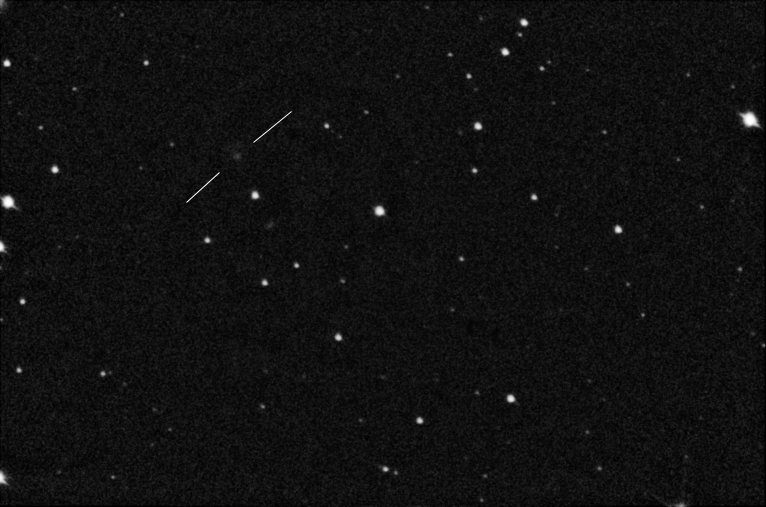
By March 2001, the comet had faded to around 16th magnitude and the tail was no longer visible. On the opposite side of the star below the comet is another nebulous object. This is listed as GSC 5796:971, a GSC non-star. This indicates a non-stellar object that made its way into the Guide Star Catalog. It is most probably a distant galaxy.
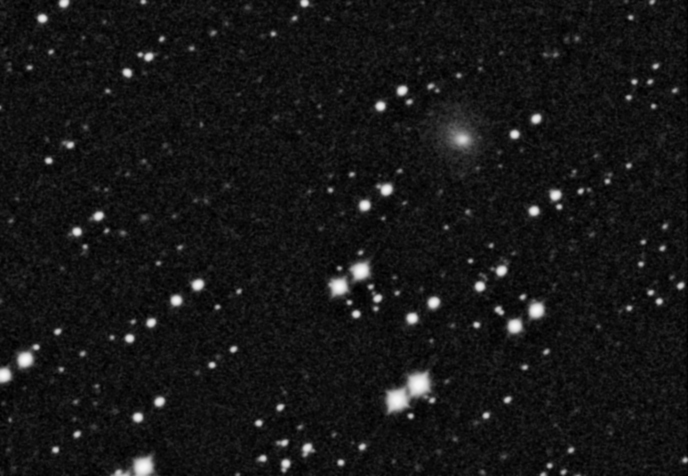
June 2001 was my last opportunity to image this comet. The comet was still around 16th magnitude and showed a good coma, despite being over 6 AU from the Sun. The reason the stars are all double is because the image is a combination of 2 pairs of images taken 90 minutes apart for astrometric purposes.
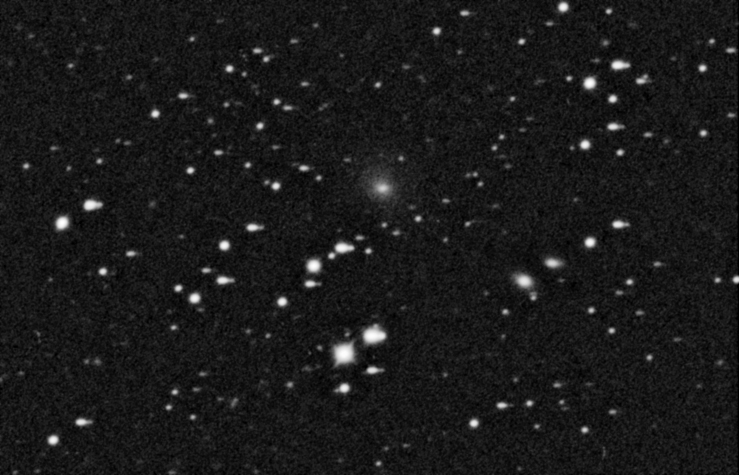
As with the above image, the stars are all double is because the image is a combination of 2 pairs of images taken 90 minutes apart. The image below is just one of these pairs and shows several faint galaxies in adition to the comet. None of these are listed in MegaStar or The Sky.
